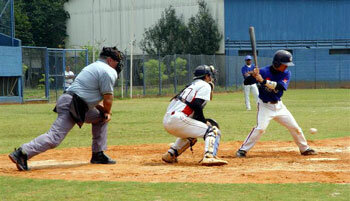O Japan is an archipelago in the Pacific, separated from the east coast of Asia (China and Korea) by the Sea of Japan, on the south by the Sea of East China (China and Taiwan) and north by the Sea of Okhotsk, towards Russia, having a total area of 377,835 km². Its surface is intensely fragmented, with its territory spread over more than 6,000 islands, the four main ones being Hokkaido, the northernmost and coldest, Honshu, the largest and most populous, Shikoku, the smallest and least populous, and finally Kyushu, the most populated south.
O relief of the country is mainly formed by mountains, constituted by a section of the Cenozoic era – relatively recent, with less than 65 million years – in the northeast and a section originated between the Mesozoic and Paleozoic eras in the southeast, which explains the lack of resources minerals. The presence of metallic minerals such as iron, gold, manganese, among others, is conditioned to ancient geological formations, at least 2 billion years old. This natural factor required Japan to conquer portions of Chinese Manchuria and the Peninsula of Korea to sustain Japanese industrial growth between the end of the 19th century and the beginning of the 20th century.
Also with regard to issues related to relief, the country is located close to the contact between four tectonic plates (Philippine Plate, Pacific Plate, Eurasian Plate and Plate North-American). Most of Japan is situated on top of the Okhotsk Plate, which for a long time was considered an integral part of the North American plate. In addition to the formation of mountain ranges, this location makes Japan a country with high levels of tectonic instability, with the presence of volcanism active, being part of a zone known as Pacific Fire Circle, which concentrates the largest active volcanoes on the planet.
Another consequence of this location is the vulnerability to earthquakes and tsunamis, in the most diverse intensities. Even with studies based on centuries of observation and a high level of geological research, it is virtually impossible to predict a major earthquake in advance to allow for preventive evacuation of the areas. The damage caused by large-scale earthquakes is equally unpredictable, such as the 8.9° earthquake on the Richter scale that occurred on the 11th. of March 2011 that triggered a tsunami with about 10 meters high, which among so many damages caused the accident at the nuclear plant in Fukushima.
Do not stop now... There's more after the advertising ;)
As almost 80% of the Japanese relief is formed by mountains, the coastal plains concentrate the majority of the population, promoting the potentiation of resources using techniques such as polderization, mainly to increase restricted land agricultural. Due to the large amount of mountainous areas, the Japanese rivers are not very extensive, but intensively used, mainly for the generation of energy and irrigation.
Your climate, to the north, is influenced by the cold and dry masses that move from Siberia, the cold current of Oya Shivo (Curilas) and the winter monsoons, configuring a cold temperate climate. In the central portion of the country, the temperate oceanic climate prevails, influenced by the warm current of Kuro Shivo (Japan Current) that eases temperatures in winter. In the south, the predominant climate is subtropical, influenced by the hot current and the summer monsoons, which increase the amount of rain.
Due to climatic variations and the presence of different altitudes, we can say that the Japan it has a variety in its flora and fauna aspects, but as Japan is a highly urbanized, with a large population concentration, the country's native vegetation occurs in very restricted. In some locations, agricultural activity ends up being confused with natural landscapes. On Kyushu Island, the presence of summer monsoons and the warm Kuro Shivo current contribute to the formation of greater biodiversity. There are remnants of subtropical forest in the south and deciduous forest in the central portion. In the stretches located further north of the country, conifers occur.
Julio César Lázaro da Silva
Brazil School Collaborator
Graduated in Geography from Universidade Estadual Paulista - UNESP
Master in Human Geography from Universidade Estadual Paulista - UNESP


